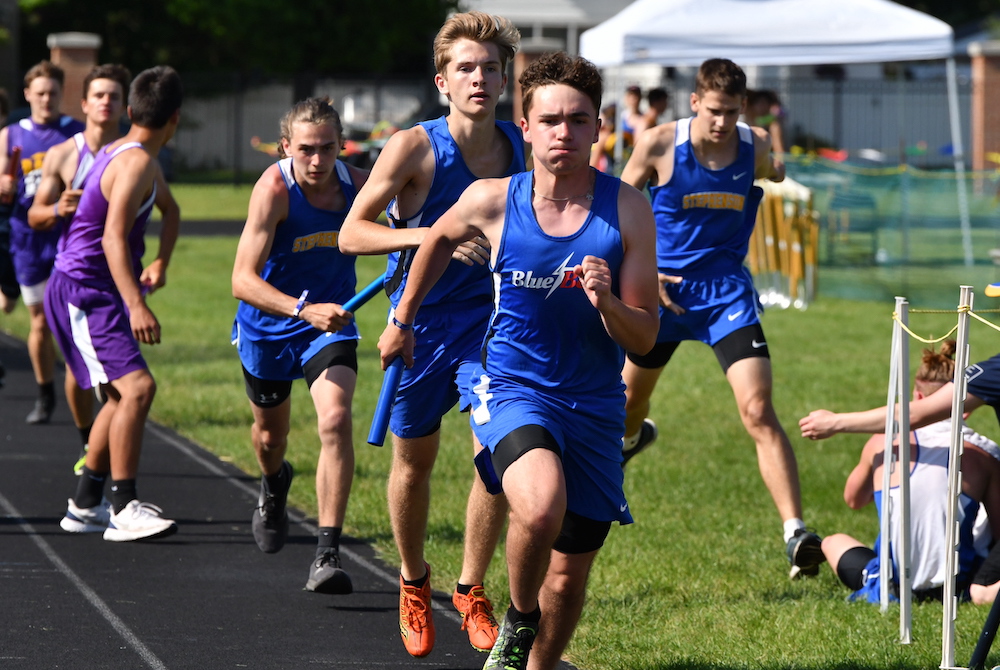
Dollar Bay Cashes In on School Records for 1st Finals Title
By
John Vrancic
Special for MHSAA.com
June 6, 2021
KINGSFORD — History was made in the Upper Peninsula Division 3 Track & Field Finals on Saturday as the Dollar Bay Blue Bolts were crowned champions for the first time with 67 points.
They were followed by Pickford with 55 and Rapid River with 47.
Dollar Bay set school records while winning the 1,600-meter relay in three minutes, 42.88 seconds and 3,200 relay in 8:31.01.
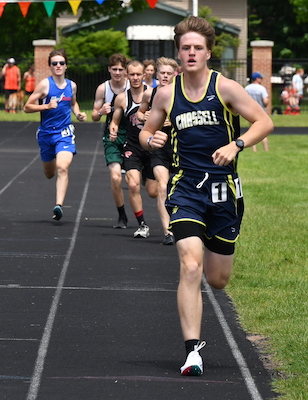 Bessemer had won the 3,200 relay eight years in a row. The Speedboys, however, took third this time (8:58.64).
Bessemer had won the 3,200 relay eight years in a row. The Speedboys, however, took third this time (8:58.64).
“We got it done,” said senior and Bay College basketball recruit Davin Hill. “Our coach pushed us hard all year. Our practices were harder than the meets.”
Senior John Norland anchored the winning 3,200 relay and took the 400 (51.38) and 800 (2:07.1).
“We knew we had a chance to win the U.P. Finals,” he said. “I ran my second-fastest split (2:01) in the 3,200 relay. The 400 and 800 are tough races. The 800 is very close to a sprint.”
Conner LeClaire added a first in the 300 hurdles (42.33) and second in the 110s (17.63).
Pickford’s lone first came on Hayden Taylor’s toss of 42 feet, 8¼ inches in shot put with Cedarville senior Drew Bailey taking second (42-2).
Rapid River senior Parker Dausey won discus (126-1) and classmate Max Lenaker took high jump (6-1).
North Central took the 400 relay (46.32) and sophomore Luke Gorzinski captured the 200 (23.29), edging Republic-Michigamme’s Isaac Lawrence by two hundredths of a second.
Lawrence won long jump (20-2) and placed third in the 100 (11.69), one hundredth of a second behind Munising’s Micaiah Peramaki.
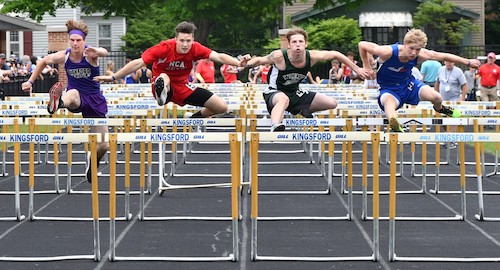 Brimley senior Cameron Hoornstra won the 100 (11.62), and Rudyard’s Gannon Smith took pole vault (10-6).
Brimley senior Cameron Hoornstra won the 100 (11.62), and Rudyard’s Gannon Smith took pole vault (10-6).
Chassell senior Kolson Kytta became a double winner, taking the 1,600 in a school-record 4:35.37 and 3,200 (10:45.14) on a hot and humid day in Dickinson County.
“I did a lot of visualization about how I thought the races would do,” said Kytta, who’s considering running at Michigan Tech. “I put in a lot of training to get better. I don’t think the heat affected me too much.”
Lake Linden-Hubbell recorded its lone first in the 800 relay (1:38.04), and Carney-Nadeau senior Tim Hodson crossed first in the 110 hurdles (17.58).
“Our handoffs looked pretty good,” said senior Caleb Klein, who anchored the winning 800 relay. “This was our best time all year ,and I think the competition helped us a lot. All the adrenalin from all the fans being here also got me going.”
PHOTOS: (Top) Dollar Bay's A.J. Datto passes the baton to Davin Hill during the 1,600 relay Saturday. (Middle) Chassell's Kolson Kytta leads the pack after completing six laps of the 3,200. (Below) Carney-Nadeau's Tim Hodson won the 110 hurdles with Connor LeClaire from Dollar Bay taking second, Pickford's Josh Sullivan taking third, and Powers North Central’s Trenton Naser taking fourth. (Photos by Cara Kamps. Click to see more at RunMichigan.com.)
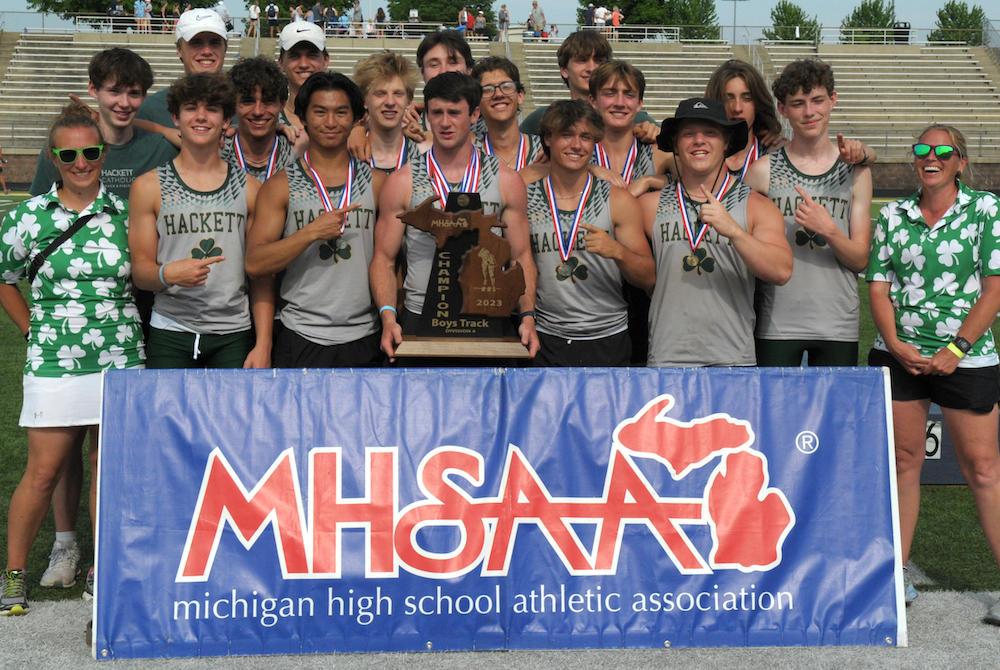
Thrower Claims Lone Individual Title to Lead Hackett to Team 3-Peat
By
Tom Lang
Special for MHSAA.com
June 3, 2023
Kalamazoo Hackett Catholic Prep just keeps winning and winning.
This time the Irish took home their fourth title in the last five Lower Peninsula Division 4 Track & Field Finals, on Saturday at Hudsonville.
Hackett’s only individual title was taken by discus winner Nathan Buchmann, a senior, who was fine knowing he was the shortest in stature among all the sizable competitors.
“In the offseason after football I worked out every day, working towards this goal,” he said after getting his medal. “I would say this takes 80 percent technique and 20 percent strength to throw the discus. So, length can help but if you have good technique and are really strong, that will play into it.
“I think we are very balanced throughout the meet today,” he said about teammates that scored points in finishes other than first place. “We have 13 guys here today, and we have people in a lot of the races. But I do not run; I have too short of legs to be a fast runner,” he said with a chuckle.
Buchmann had to work through a hip injury to compete this spring.
“I think the setbacks are what make you strong,” he said. “You can either give up through the setbacks or push forward and become better.”
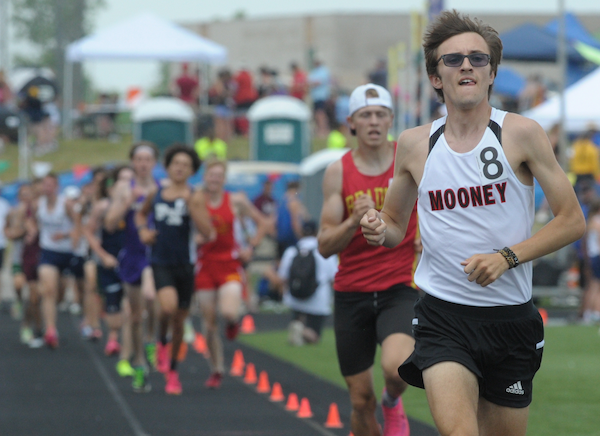 Coach Charissa Dean agreed.
Coach Charissa Dean agreed.
“The kids have big hearts,” she said after all the points were totaled and the Irish were on top once again, with 53. “They worked hard. They had a lot of potential when we started the season. And we had a lot of drive to put in the work, and we are happy the results came out the way they did.”
Reading was runner-up at 47 points, followed by Wyoming Potter’s House Christian with 42, then Fowler and Flint Beecher each with 37 points.
Senior Lezawe “Moses” Osterink, of Potter’s House Christian, placed second in 1,600 but took the 3,200 title as defending champ of both. He dominated the latter by lapping the field with a final lap kick that resembled more of a superhero speedster.
“Nobody really took it out that hard at the start,” he said. “There was a freshman (Marek Butkiewicz of Hackett) that tried to get the pace going quick, but me and Dakota (Dykhuis of Montabella) just kind of sat back and gradually pulled him through.
“We took it gradually, and I was just relying that I could kick.”
Kick did he ever. The trio were neck and neck the majority of the race in a grouping ahead of the pack.
“With 400 to go I just tried to go all out,” Osterink said. “I had a lot more left than I thought and I was pleased with the win. Not really the time, but that doesn’t matter, especially this hot out.”
The overall meet was in the low 90s/high 80s heat and searing sun all day. So, race officials allowed the unique opportunity for coaches to spray the runners with water and give them water bottles.
“It was very weird because I’ve never taken water to drink while I’m running, so I didn’t know how that would feel,” Osterink said. “And they were spraying us and hitting us in the face. It was kind of fun.”
Junior Tyler Lenn of Marine City Cardinal Mooney defeated Osterink at his own game in the 1,600.
“I’m feeling great,” Lenn said after grabbing the medal. “I said to a newspaper after one of my races (during the season) I was right where I wanted to be. This has been a long rebuilding process for me since an injury back in the fall, and I set a pretty high goal the day the injury happened. I was telling myself I needed to fulfill what I said I would do at the beginning of last cross country season. And that is what I did today.”
Lenn suffered an ankle sprain from a misstep that turned worse because he kept running through the season on it.
“Coming back from that was pretty tough, but I wouldn’t have it any other way,” he said. 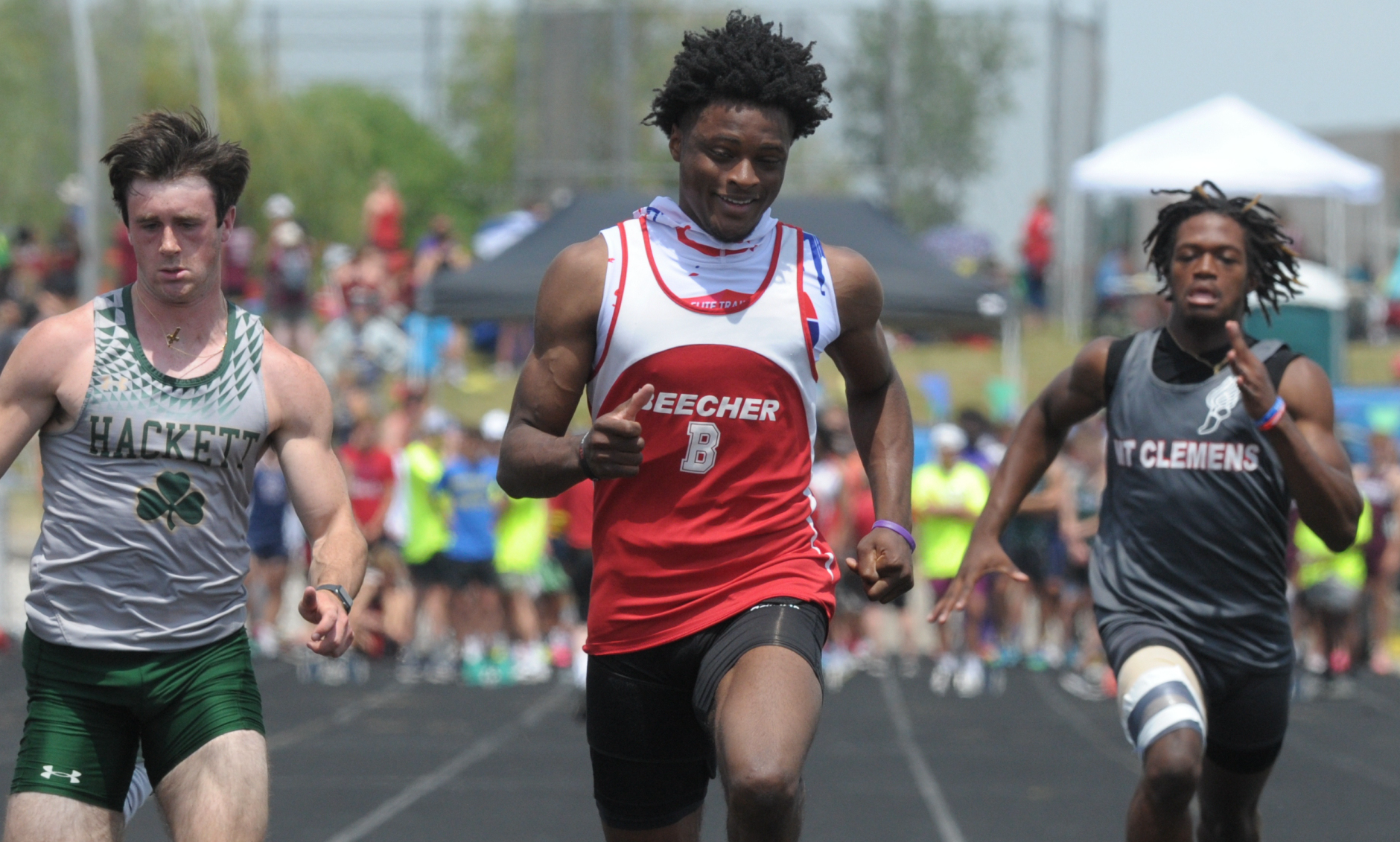 “Perseverance; I said from the beginning what I was going to do. I kept my eye on that target, and no matter the circumstances life threw at me, that I was going to make it happen and I am a man of my word.”
“Perseverance; I said from the beginning what I was going to do. I kept my eye on that target, and no matter the circumstances life threw at me, that I was going to make it happen and I am a man of my word.”
Jaylin Townsend, a senior from Flint Beecher, dominated the short races. He won the 100 dash (10.67) and 200 dash at 22 seconds flat. It was his third 100 win at a Finals.
“I put in a lot of work; I had to three-peat,” he said after the 100. “There’s a lot of great competition here, so I knew I had to come out and run my best.”
Concord in the 400 (43.72), Buckley in the 800 (1:30.76) and 1,600 (3:29.13) and Potter’s House in the 3,200 (8:14.18) were relay champs Saturday. Reading’s Tayshawn Bester won the 110 hurdles (15.13), and Athens’ Landen Bennett won the 300 (39.85). Caseville’s Nathan Feltner won the 400 (50.76), and Vestaburg’s Owen Patton claimed the 800 (1:55.11).
Fruitport Calvary Christian’s Bradley Richards won the high jump (6-10), and Peck’s Alex Affer won the long jump (23-4). McBain Northern Michigan Christian’s Isaac Bowden was first in pole vault (13-0), and Brown City’s Kyle Affer won shot put (49-2).
PHOTOS (Top) Kalamazoo Hackett Catholic Prep celebrates its third-straight LPD4 title Saturday. (Middle) Cardinal Mooney's Tyler Lenn, far right, sets the pace in the 1,600. (Below) Flint Beecher's Jaylin Townsend, middle, crosses the finish first for one of his two sprint championships. (Photos by Ken Swart/RunMichigan.com.)

